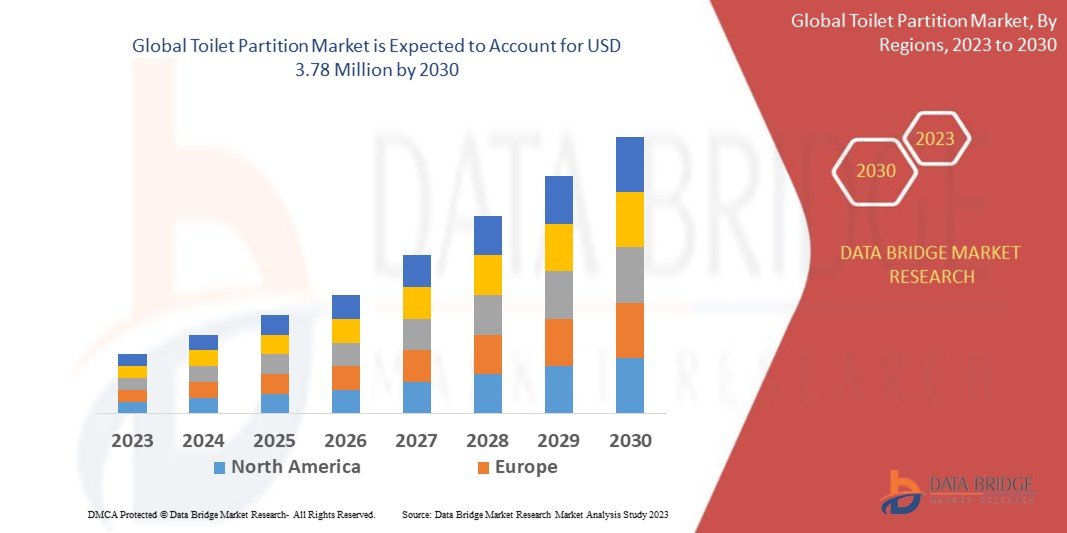Toilet Partition Market: Trends, Drivers, and Future Outlook
The Toilet Partition Market has emerged as a vital segment within the larger architectural interiors and facilities management industry. Toilet partitions—also known as restroom dividers or bathroom stalls—are essential in public, commercial, institutional, and residential facilities. As building owners and managers increasingly prioritize aesthetics, durability, privacy, and hygiene, demand for advanced partition solutions continues to grow.
Market Overview
Toilet partitions provide privacy, security, and style in restrooms. They come in a variety of materials, finishes, and configurations to suit different environments—from high-traffic airports and shopping malls to corporate offices, schools, and healthcare facilities. The market encompasses:
-
Materials: Laminate (HPL), stainless steel, solid plastic (HDPE), phenolic, powder-coated steel, and composite panels.
-
Configurations: Floor-mounted, overhead-braced, floor-to-ceiling, and ceiling-hung systems.
-
Styles and Finishes: Wood grain, custom graphics, powder-coated colors, and anti-microbial surfaces.
Key Market Drivers
-
Rising Construction & Renovation Activity
Growth in commercial real estate (offices, retail centers) and public infrastructure (airports, sports venues) fuels new restroom projects and upgrades to existing facilities. -
Focus on Hygiene & Cleanliness
Post-pandemic awareness has increased demand for anti-microbial and easy-to-clean materials (solid plastic and phenolic), reducing infection risk in high-traffic restrooms. -
Customization & Aesthetics
Architects and designers are specifying partitions that match interior themes—offering custom colors, patterns, and textures to enhance brand identity and user experience. -
Durability & Low Maintenance
Materials like stainless steel and solid plastic offer superior moisture resistance and vandal-proof characteristics, lowering long‑term maintenance costs. -
Sustainability Trends
Recycled-content panels and eco-friendly manufacturing practices are gaining traction as building owners pursue LEED and WELL certification.
Market Segmentation
| Segment | Sub‑segments |
|---|---|
| By Material | Laminate (HPL), Stainless Steel, Solid Plastic (HDPE), Phenolic, Powder‑Coated Steel, Composite |
| By Configuration | Floor‑Mounted, Overhead‑Braced, Floor‑to‑Ceiling, Ceiling‑Hung |
| By End‑User | Commercial (Malls, Offices), Institutional (Schools, Hospitals), Transportation (Airports, Stations), Leisure (Stadiums, Theme Parks), Residential |
| By Installation | New Construction, Renovation & Replacement |
| By Region | North America, Europe, Asia‑Pacific, Latin America, Middle East & Africa |
Regional Insights
-
North America currently leads the market, driven by robust commercial construction and stringent building codes requiring high‑performance materials.
-
Europe follows closely, with emphasis on sustainable building practices and classic design aesthetics.
-
Asia‑Pacific is the fastest‑growing region, supported by rapid urbanization, expanding hospitality and retail sectors in China and India, and government investments in public infrastructure.
-
Latin America and MEA are emerging markets, where modernization of institutional and transportation facilities is creating new opportunities.
Competitive Landscape
Key players competing in the toilet partition market include:
-
Hodge Products, Inc.
-
Bobrick Washroom Equipment, Inc.
-
Scranton Products, Inc.
-
DIRECTORY Industrial Manufacturing
-
ASI Commercial, Inc.
-
Bradley Corporation
-
Sloan Valve Company
These manufacturers differentiate through product innovation—such as anti‑microbial surfaces, integrated hardware systems, and bespoke design services—while also expanding distribution networks and offering turnkey installation.
Challenges
-
Cost Pressures: High‑end partitions can be expensive, challenging adoption in budget‑sensitive projects.
-
Supply Chain Disruptions: Raw‑material volatility (resins, metals) can lead to longer lead times and higher prices.
-
Regulatory Compliance: Varying local building codes and accessibility standards (e.g., ADA in the U.S.) require manufacturers to tailor offerings for each market.
Future Outlook
The toilet partition market is projected to grow steadily over the next decade, underpinned by:
-
Smart Restroom Integration: Sensors for occupancy, automated doors, and IoT‑enabled hygiene monitoring.
-
Modular & Prefabricated Systems: Faster construction timelines and reduced onsite labor.
-
Advanced Materials: Nano‑coatings for self‑cleaning surfaces, lightweight yet durable composites, and recycled‑content panels.
-
Design Innovation: Mixed‑material installations combining glass, wood, and metal for upscale environments.
As facility managers and designers seek to balance form, function, and sustainability, toilet partition manufacturers that offer customizable, hygienic, and eco‑friendly solutions will lead the market’s evolution.
Get More Details :https://www.databridgemarketresearch.com/reports/global-toilet-partition-market


